Happy Mother’s Day to Every Mother on Earth
We appreciate your hardship carrying us through nine months and raising us with love and care.
The real reasons why child birth is so painful and dangerous
There is a long-standing idea that it is because we walk upright, but new research suggests that might not be the whole story
By Colin Barras, 22 December 2016
Giving birth can be a long and painful process. It can also be deadly. The World Health Organization estimates that about 830 women die every day because of complications during pregnancy and childbirth – and that statistic is actually a 44% reduction on the 1990 level.
“The figures are just horrifying,” says Jonathan Wells, who studies childhood nutrition at University College London in the UK. “It’s extremely rare for mammalian mothers to pay such a high price for offspring production.”
So why exactly is childbirth so risky for humans? And is there anything we can do to further reduce those death rates?
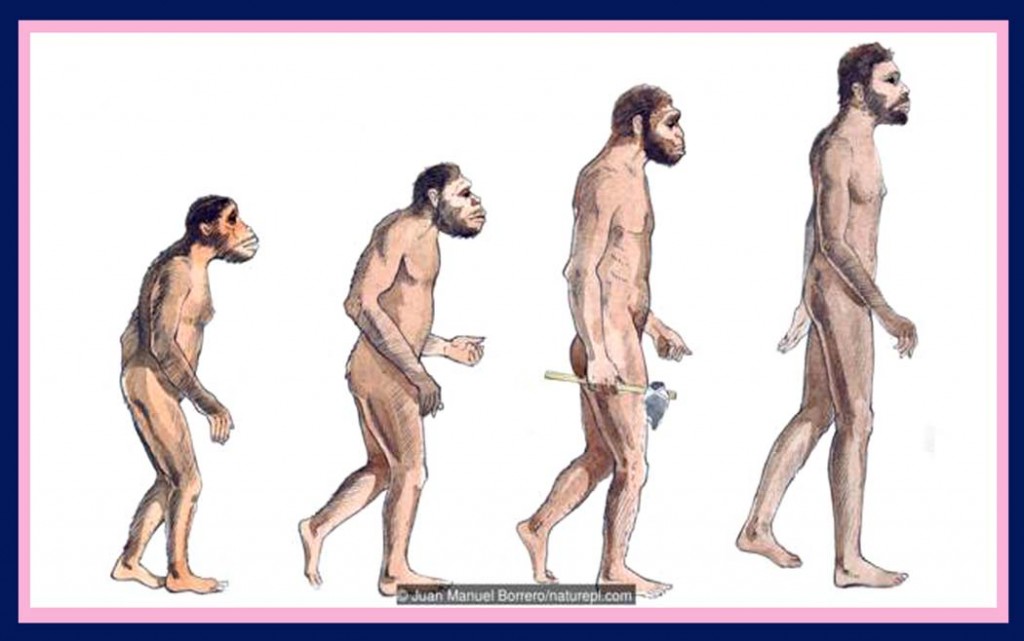 Hominins have walked upright for millions of years (Credit: Juan Manuel Borrero/naturepl.com)
Hominins have walked upright for millions of years (Credit: Juan Manuel Borrero/naturepl.com)
Scientists first began thinking about the problem of human childbirth in the middle of the 20th Century. They soon came up with an idea that seemed to explain what was going on. The trouble began, they said, with the earliest members of our evolutionary lineage – the hominins.
From an early date in our prehistory, hominin babies may have had to twist and turn to pass through the birth canal
The oldest hominin fossils so far found date back about seven million years. They belong to animals that shared very few of our features, except perhaps one: some researchers think that, even at this early stage, hominins were walking upright on two legs.
To walk on two legs efficiently, the hominin skeleton had to be pushed and pulled into a new configuration, and that affected the pelvis.
In most primates the birth canal in the pelvis is relatively straight. In hominins, it soon began to look very different. Hips became relatively narrow and the birth canal became distorted – a cylinder that varied in size and shape along its length.
So from an early date in our prehistory, hominin babies may have had to twist and turn to pass through the birth canal. This would have made birth a far more difficult task than it had been previously.
Then things got even worse.
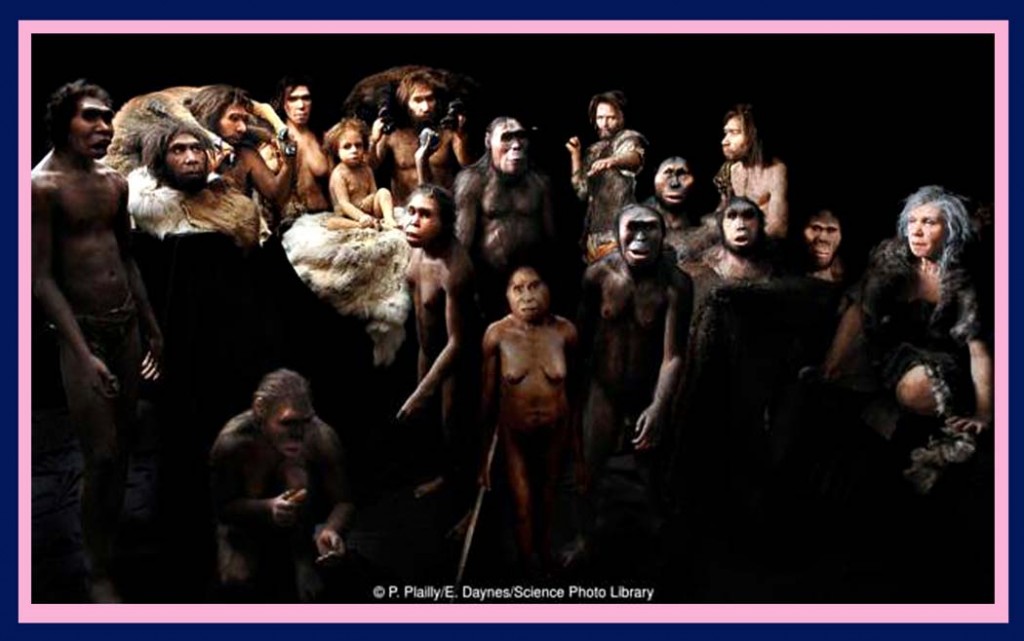 Most hominins walked upright (Credit: P. Plailly/E. Daynes/Science Photo Library)
Most hominins walked upright (Credit: P. Plailly/E. Daynes/Science Photo Library)
About two million years ago, our hominin ancestors began to change again. They lost their more ape-like features such as a relatively short body, long arms and small brain. Instead they began to gain more human-like ones, like taller bodies, shorter arms and bigger brains.
That last trait in particular was bad news for female hominins.
I was going to find evidence that supported the obstetric dilemma, but very soon everything came crashing down
Big-brained adults start out life as big-brained babies, so evolution came into conflict with itself. On the one hand, female hominins had to maintain a narrow pelvis with a constricted birth canal in order to walk efficiently on two legs. But at the same time the foetuses they carried were evolving to have larger heads, which were a tighter and tighter fit through those narrow pelvises.
Childbirth became a distressingly painful and potentially lethal business, and it remains so to this day.
In 1960, an anthropologist called Sherwood Washburn gave this idea a name: the obstetrical dilemma. It is now often called the “obstetric dilemma”. Scientists thought it explained the problem of human childbirth perfectly. Many still think it does.
But some, including Wells, are no longer happy with this standard explanation. In the last five years, Wells and several other researchers have begun to push against the classic story of the obstetric dilemma.
They think Washburn’s idea is too simplistic, and that all sorts of other factors also contribute to the problem of childbirth.
 Many women use pain relief during labour (Credit: Science Photo Library/Alamy)
Many women use pain relief during labour (Credit: Science Photo Library/Alamy)
Holly Dunsworth of the University of Rhode Island, Kingston, was drawn to the obstetric dilemma while she was still a grad student. “I thought it was so exciting, I was going to find evidence that supported the obstetric dilemma,” she says. “But very soon everything came crashing down.”
We have bigger babies and longer pregnancies than you would expect
The problem was with the predictions Washburn made. “When Washburn wrote his article, he was actually saying that the obstetric dilemma was solved by giving birth to babies at a relatively early stage in their development,” says Wells.
Go back to that moment two million years ago when human brains began to grow larger. Washburn suggested that humans found a solution of sorts: shortening the length of the human pregnancy. Human babies were forced out into the world earlier than they really should be, so that they were still relatively small, with diminutive, underdeveloped brains.
Washburn’s explanation seems logical. Anyone who has held a newborn can appreciate how underdeveloped and vulnerable they are. The standard view is that other primates hold onto their pregnancies for longer and give birth to babies that are more developmentally advanced.
But, says Dunsworth, it is simply not true.
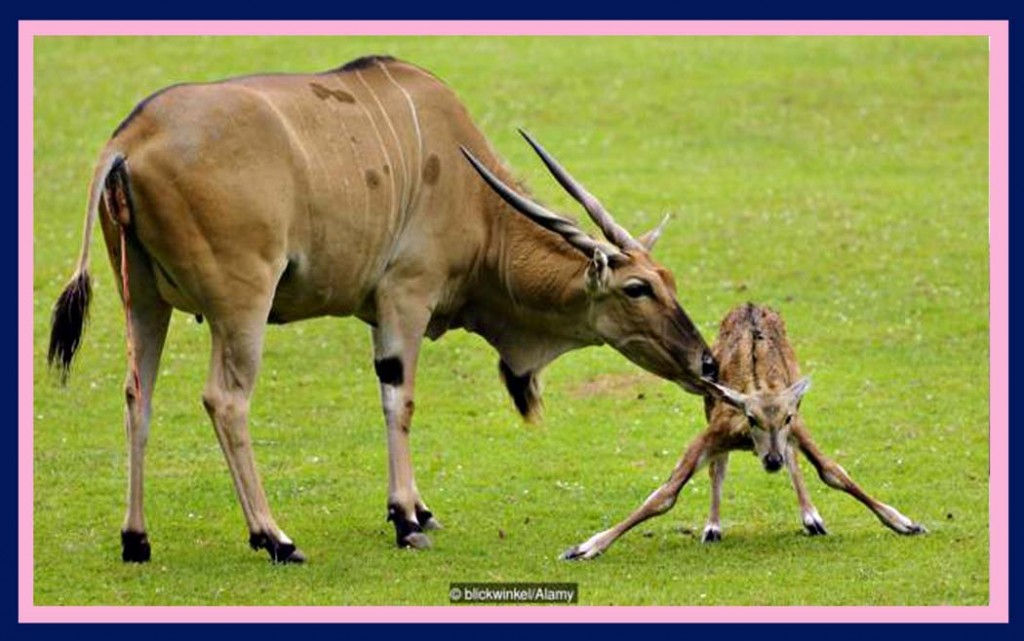 Some animals, like this baby common eland (Taurotragus oryx), can walk straight after being born (Credit: blickwinkel/Alamy)2
Some animals, like this baby common eland (Taurotragus oryx), can walk straight after being born (Credit: blickwinkel/Alamy)2
“We have bigger babies and longer pregnancies than you would expect,” she says.
Women give birth to babies with larger brains than we would expect
In an absolute sense human pregnancies are long. They typically last 38-40 weeks, whereas a chimpanzee pregnancy is 32 weeks long, and gorillas and orang-utans give birth after about 37 weeks.
As Dunsworth and her colleagues explained in a 2012 paper, this remains true even if we adjust the pregnancy durations to take into account differences in body mass. Human pregnancies last 37 days longer than they should do for an ape our size.
The same thing applies for brain size. Women give birth to babies with larger brains than we would expect of a primate with the average woman’s body mass. This means that a key prediction of Washburn’s obstetric dilemma is incorrect.
There are other problems with Washburn’s idea too.
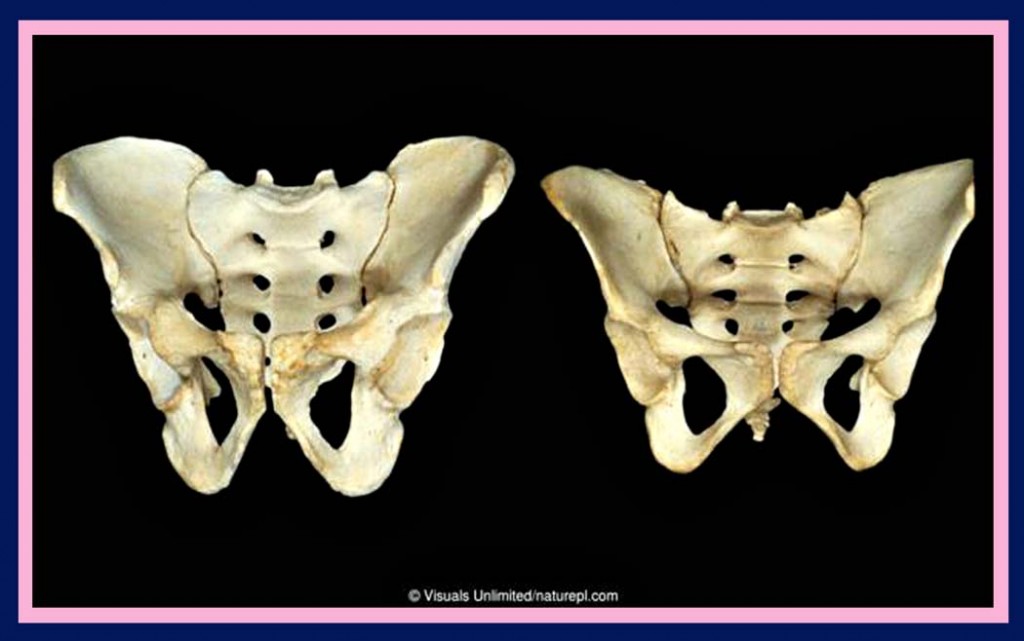 Male (left) and female (right) human pelvises (Credit: Visuals Unlimited/naturepl.com)
Male (left) and female (right) human pelvises (Credit: Visuals Unlimited/naturepl.com)
A central assumption of the obstetric dilemma is that the size and shape of the human pelvis – and the female pelvis in particular – is highly constrained by our habit of walking upright on two legs. After all, if evolution could have “solved” the problem of human childbirth by simply making women’s hips a little wider and the birth canal a little larger, it surely would have done so by now.
The birth canal is extraordinarily variable in size and shape
In 2015, Anna Warrener at Harvard University in Cambridge, Massachusetts, and her colleagues questioned this assumption.
The researchers collected metabolic data from male and female volunteers who were walking and running in the lab. Volunteers with wider hips were no more inefficient at walking and running than their narrow-hipped peers. From purely energetic considerations, at least, there does not seem to be anything stopping humans evolving wider hips that would make childbirth easier.
“The basic premise of the obstetric dilemma – that having a small or narrow pelvis is best for biomechanical efficiency – is likely not correct,” says Helen Kurki of the University of Victoria in British Columbia, Canada.
Kurki was not involved with Warrener’s study, but her own research has identified yet more problems for the traditional obstetric dilemma hypothesis.
 Childbirth is notoriously painful (Credit: Blend Images/Alamy)
Childbirth is notoriously painful (Credit: Blend Images/Alamy)
If the female pelvis really is tightly governed by two opposing forces – the need to be narrow for walking and the need to be wide for giving birth – the shape of the birth canal should vary little between women. It should be “stabilised” by natural selection.
Pregnant women sometimes joke that their developing foetus feels like an energy-sapping parasite
But after analysing hundreds of human skeletons, Kurki reported in 2015 that the birth canal is extraordinarily variable in size and shape. It varies even more than the size and shape of human arms, a trait that is known to vary between individuals.
“I think my findings do support shifting attitudes to the obstetric dilemma,” says Kurki.
Washburn’s tidy narrative does not seem quite as satisfying as it once did. There has to be something else going on.
Dunsworth thinks she has identified one important missing piece in the puzzle: energy.
“We max out toward the end of pregnancy,” says Dunsworth, herself a mother. “Those last weeks and months of pregnancy are tiring. They are pushing right against the possible sustainable metabolic rates in humans. It has to end at some point.”
Evolution could, in principle, make the pelvis larger – but it has not had to
Pregnant women sometimes joke that their developing foetus feels like an energy-sapping parasite. In a sense it really is, and its energy demands grow with every passing day.
In particular, human brains have an almost insatiable appetite for energy. Growing a second, tiny brain inside the womb can push a pregnant woman close to the edge, metabolically speaking.
Dunsworth calls this idea the energetics of gestation and growth (EGG) hypothesis. It suggests the timing of childbirth is governed by the difficulties of continuing to nourish a developing foetus beyond 39 weeks – not by the difficulties of squeezing the baby out through the birth canal.
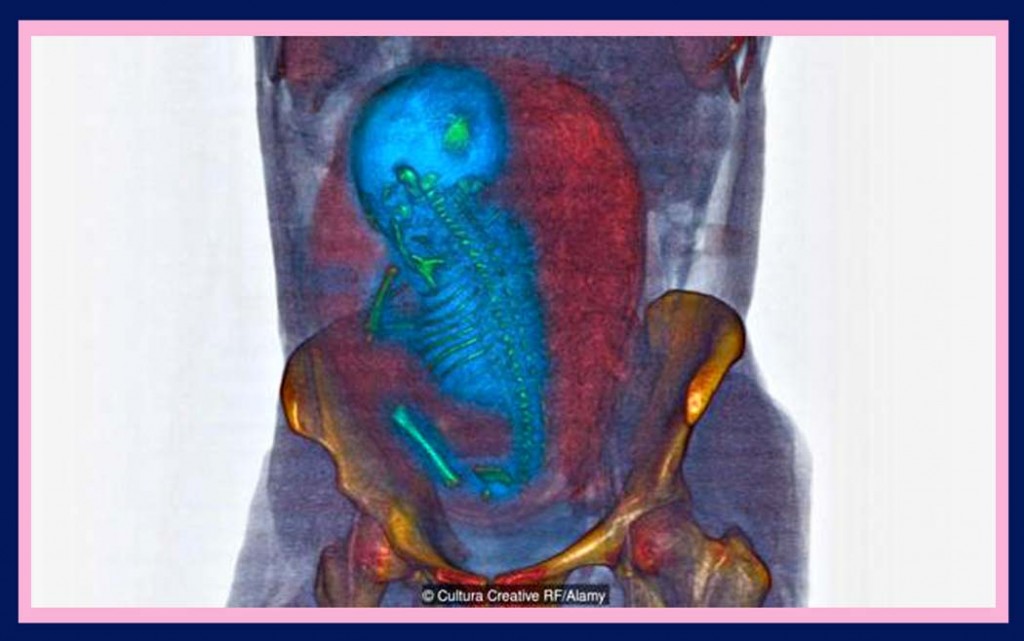 This CT scan shows the size of a full-term foetus (Credit: Cultura Creative RF/Alamy)
This CT scan shows the size of a full-term foetus (Credit: Cultura Creative RF/Alamy)
Dunsworth thinks people obsess too much about the tight fit between a baby’s head and its mother’s birth canal. It might seem too much of a coincidence that the two are so closely size-matched, but she says the pelvis has simply evolved to be the size it needs to be. Evolution could, in principle, make the pelvis larger – but it has not had to.
For most of human evolution, childbirth might have been quite a lot easier
By and large, Kurki shares this view. “The obstetric canal is big enough, the majority of the time, for the foetus to pass through,” she says.
This is true. But even so, take another look at the maternal mortality figures: 830 deaths every day. Even among women who do not lose their lives during childbirth, some studies say the process leads to life-changing but non-lethal injuries in as many as 40% of cases. The price women pay for childbirth seems extraordinarily high.
Wells agrees. “It’s impossible to imagine the problem has been this bad over the long term.”
Perhaps it has not. In 2012, Wells and his colleagues took a look at the prehistory of childbirth, and came to a surprising conclusion. For most of human evolution, childbirth might have been quite a lot easier.
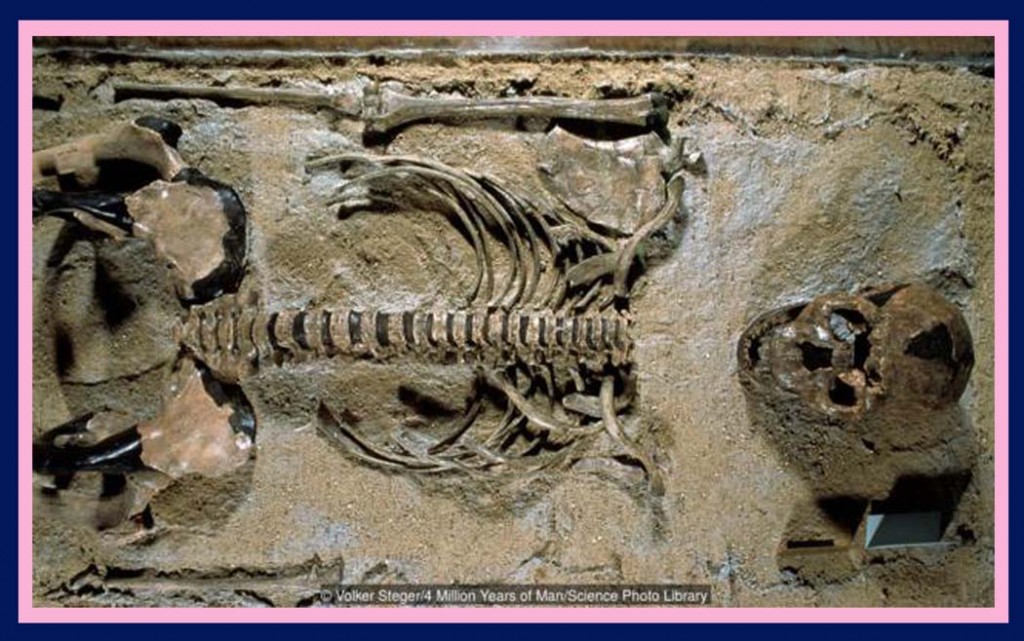 Homo erectus may have found birth easier than we do (Credit: Volker Steger/4 Million Years of Man/Science Photo Library)
Homo erectus may have found birth easier than we do (Credit: Volker Steger/4 Million Years of Man/Science Photo Library)
The prehistory of childbirth is a difficult subject to study. The hominin pelvis is rarely preserved in the fossil record, and newborn skulls are even thinner on the ground. But from the meagre evidence available it seems that some earlier species of human, including Homo erectus and even some Neanderthals, had a relatively easy time of it when it came to giving birth.
A shift to farming may have led to developmental changes that made childbirth far more difficult
In fact, Wells and his colleagues suspect childbirth might even have been a relatively minor problem in our species – at least to begin with. There are very few newborn baby skeletons among the human remains from early hunter-gatherer groups, which might hint that death rates among newborns were relatively low.
This situation changed a few thousand years ago. People began farming, and newborn baby skeletons became a far more common feature of the archaeological record, at least in some places.
If there was a rise in newborn death rates at the dawn of farming, there were almost certainly several factors involved.
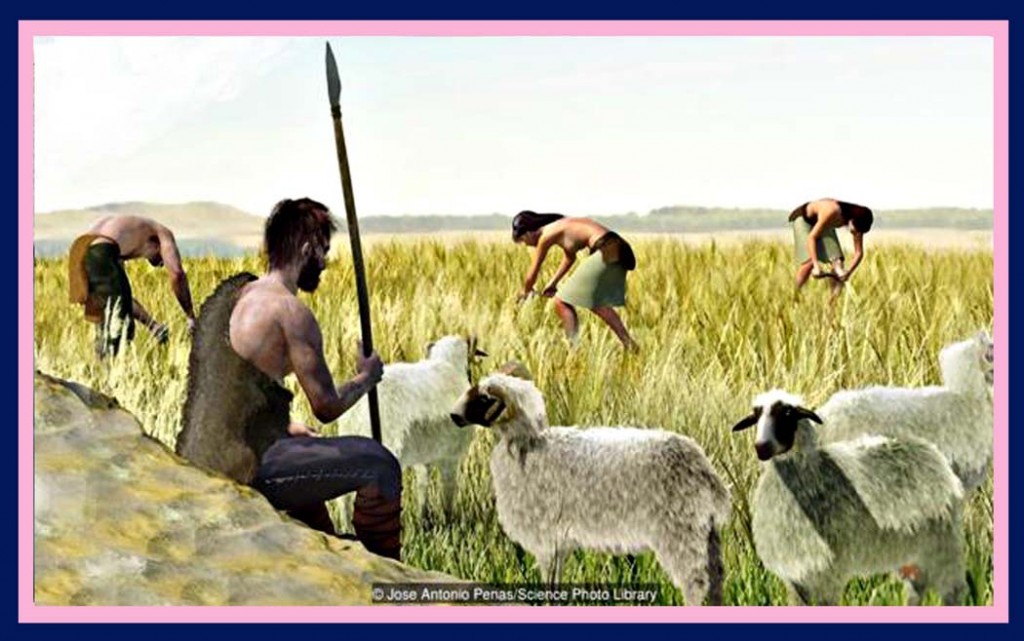 Farming changed our bodies yet again (Credit: Jose Antonio Penas/Science Photo Library)
Farming changed our bodies yet again (Credit: Jose Antonio Penas/Science Photo Library)
For instance, early farmers began living in relatively dense settlements, so transmissible disease probably became a far greater problem. Newborns are often particularly vulnerable when an infection is going around a community.
But Wells and his colleagues suspect a shift to farming also led to developmental changes that made childbirth far more difficult. A rise in infant mortality at the dawn of farming might be due in part to a raised risk of death during childbirth.
Human childbirth suddenly became more difficult about 10,000 years ago
There is one striking feature archaeologists have noticed when comparing the skeletons of early farmers with their hunter-gatherer ancestors. The farmers were noticeably shorter in stature, probably because their carbohydrate-rich diet was not particularly nutritious compared to the protein-rich hunter-gatherer diet.
This is a telling observation for those who study childbirth, says Wells, because there is evidence of a link between a woman’s height and the size and shape of her pelvis. In general, the shorter a woman, the narrower her hips. In other words, the shift to farming almost certainly made childbirth a little bit more challenging.
On top of that, the carbohydrate-rich diets that became more common with farming can cause a developing foetus to grow larger and fatter. That makes the baby harder to deliver.
Combine these two factors and human childbirth – which might have been relatively easy for millions of years – suddenly became more difficult about 10,000 years ago.
 Pregnancy gets pretty exhausting (Credit: Blend Images/Alamy)
Pregnancy gets pretty exhausting (Credit: Blend Images/Alamy)
Something rather like this “farming revolution effect” replays whenever human diets become poorly nutritious – particularly if those diets also contain a lot of carbohydrates and sugars, which encourage foetal growth.
“We can make a simple prediction that the nutritional status of mothers should be associated with a local prevalence of maternal mortality and difficulties with giving birth,” says Wells. The statistics clearly follow such a pattern, suggesting that improving nutrition might be a fairly easy way to reduce maternal mortality.
Pregnant women have adapted to nourish their foetus for as long as they can
Both Dunsworth and Kurki think that Wells has identified something significant in his work – something that perhaps would only be evident to a researcher with the right background in nutrition and development.
“I’m so lucky that Jonathan is describing these complex issues from his perspective of human health,” says Dunsworth. “At the same time I’m approaching the problem from my perspective of human evolution.”
So we now have a new explanation for the difficulties of human childbirth. Pregnant women have adapted to nourish their foetus for as long as they can before it grows too large to feed internally. The female pelvis has adapted to be just the right size to allow this maximally-nourished foetus to travel through safely. And dietary changes in the last few thousand years have upset this fine balance, making childbirth risky – particularly for mothers who have a poor diet.
However, Dunsworth says that is probably not the end of the story.
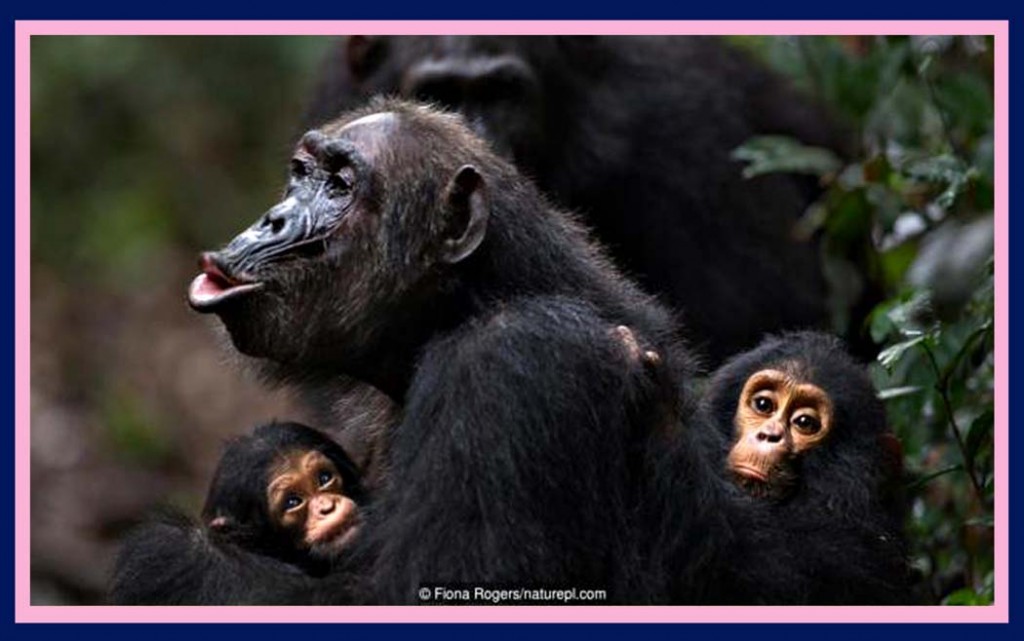 A female chimp with her granddaughter (left) and son (Credit: Fiona Rogers/naturepl.com)
A female chimp with her granddaughter (left) and son (Credit: Fiona Rogers/naturepl.com)
You do get something quite cute at the end, though (Credit: Tetra Images/Alamy)
Washburn’s ideas made good intuitive sense for decades, until Dunsworth, Wells, Kurki and others began to pick them apart. “What if the EGG perspective is too good to be true?” asks Dunsworth. “We have to keep searching and keep collecting evidence.”
This is exactly what other researchers are doing.
For instance, in 2015 Barbara Fischer of the Konrad Lorenz Institute for Evolution and Cognition Research in Klosterneuburg, Austria and Philipp Mitteroecker of the University of Vienna, Austria took another look at the female pelvis.
A woman’s pelvis takes on a shape more conducive to childbirth in her late teens – when she reaches peak fertility
It seemed to them that Dunsworth’s EGG hypothesis – compelling though it is – could actually be seen as complementary to Washburn’s ideas, rather than disproving them entirely. Dunsworth agrees: she thinks many factors are involved in the evolution of modern childbirth.
Fischer and Mitteroecker investigated whether there is any correlation between female head size and pelvis size. Head size is heritable, at least to some extent, so women would benefit during childbirth if those with larger heads also naturally had a wider pelvis.
The researchers’ analysis of 99 skeletons suggested such a link does indeed exist. They concluded that a woman’s head size and her pelvic dimensions must somehow be linked at the genetic level.
“This does not mean that the [problem of childbirth] has been resolved,” says Fischer. But the problem would be even worse if there was no link between head size and pelvis width.
And there is another complication: women’s bodies change as they get older.
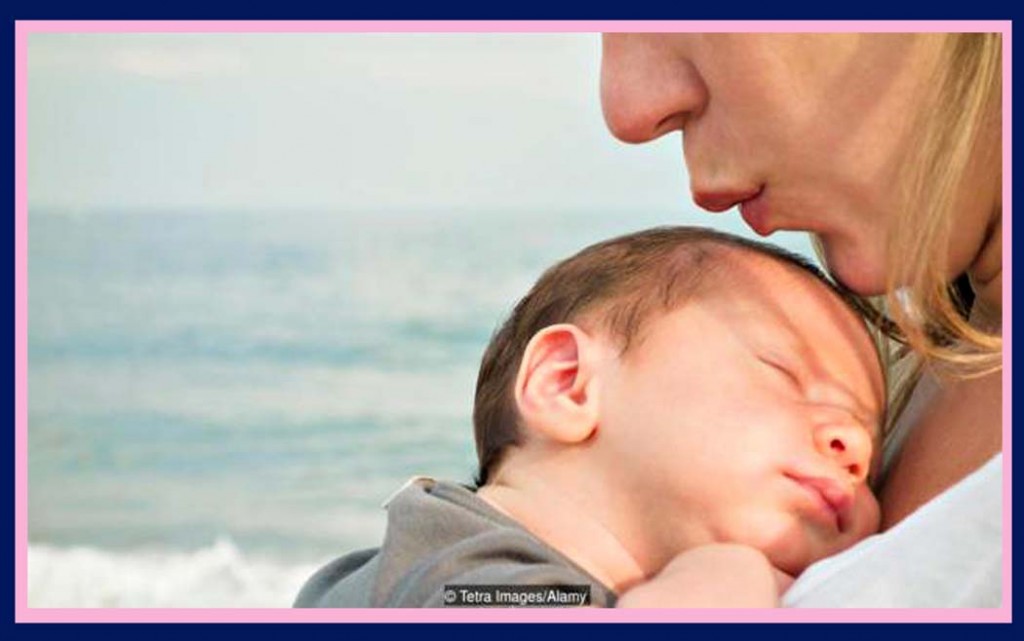 You do get something quite cute at the end, though (Credit: Tetra Images/Alamy)
You do get something quite cute at the end, though (Credit: Tetra Images/Alamy)
A May 2016 study led by Marcia Ponce de León and Christoph Zollikofer at the University of Zurich, Switzerland examined pelvic data from 275 people – male and female – of all ages. The researchers concluded that the pelvis changes dimensions during the course of a woman’s lifetime.
Many babies are now born by Caesarean section
Their data suggested that a woman’s pelvis takes on a shape more conducive to childbirth in her late teens – when she reaches peak fertility. It then stays that way until around her 40th birthday, when it then gradually changes shape to become less suitable for childbirth, ready for the menopause.
The scientists suggest these changes make childbirth a little easier than it otherwise would be. They call this idea the “developmental obstetric dilemma” (DOD).
“The DOD hypothesis provides a developmental explanation for the variation in pelvic obstetric dimensions,” says Ponce de León.
If all these evolutionary pressures are acting on childbirth, is the process still changing and evolving even now?
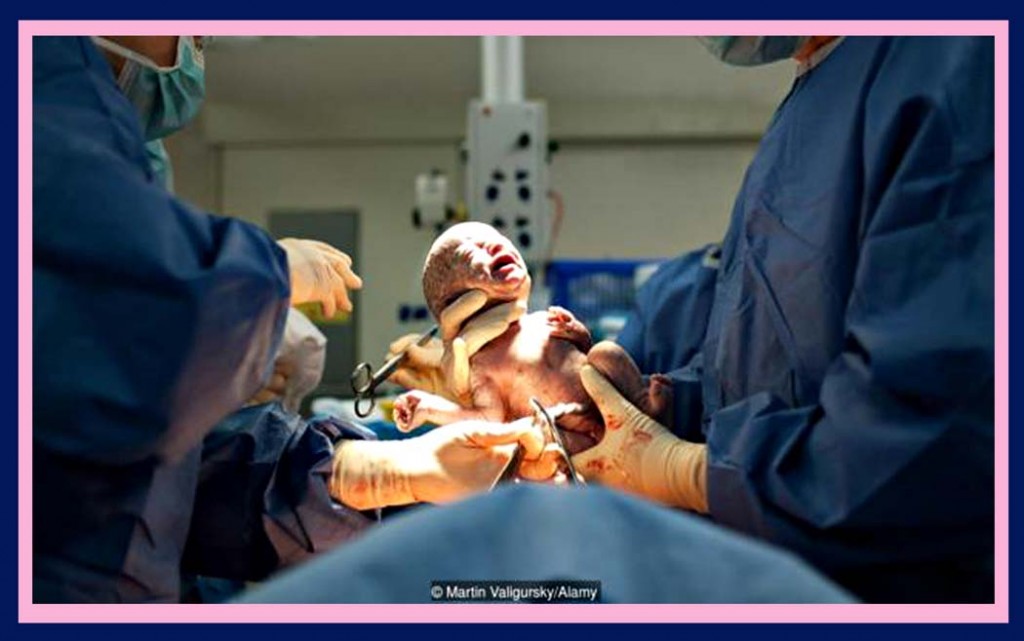 A baby born by Caesarean section (Credit: Martin Valigursky/Alamy)
A baby born by Caesarean section (Credit: Martin Valigursky/Alamy)
In December 2016, Fischer and Mitteroecker made headlines with a theoretical paper that addressed this question.
Earlier studies had suggested that larger babies have a better chance of survival and that size at birth is at least somewhat heritable. Together, these factors might lead the average human foetus to push up against the size limit imposed by the female pelvis, even though it can be fatal to push too far.
We all either did or didn’t arrive in the world through a pelvis
But many babies are now born by Caesarean section, an operation in which the baby is taken out of the mother’s abdomen without ever entering the birth canal. Fischer and Mitteroecker suggested that, in societies where C-sections have become more common, foetuses can now grow “too large” and still have a reasonable chance of survival.
In theory, as a consequence the number of women giving birth to babies that are too big to fit through their pelvis might have risen by 10 or 20% in just a few decades, at least in some parts of the world. Or, to put it in cruder terms, people in these societies might be evolving to have larger babies.
For now this is only an idea and there is no hard evidence that it is really happening. But it is an intriguing thought.
“We all either did or didn’t arrive in the world through a pelvis,” says Wells. “If we did, that pelvis mattered. And if we didn’t, that in itself is interesting.”
Ever since live birth evolved, babies have been constrained to some degree by the size of the birth canal. But maybe, for some babies at least, that is no longer true.
Join over six million BBC Earth fans by liking us on Facebook, or follow us on Twitter and Instagram.
For more information please visit the following link:
https://www.bbc.com/earth/story/20161221-the-real-reasons-why-childbirth-is-so-painful-and-dangerous
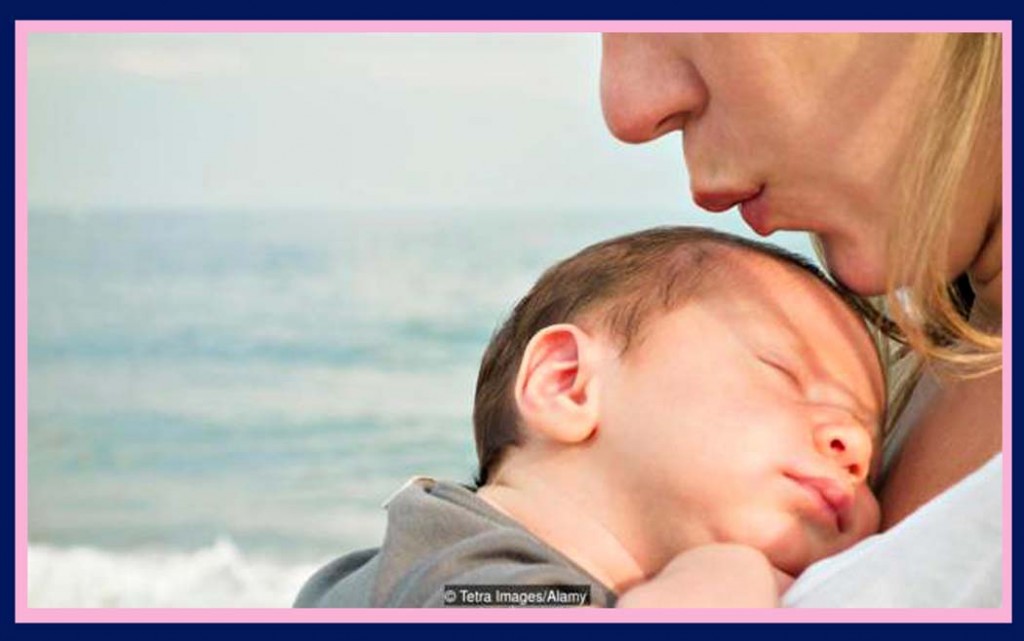
Leave a Reply